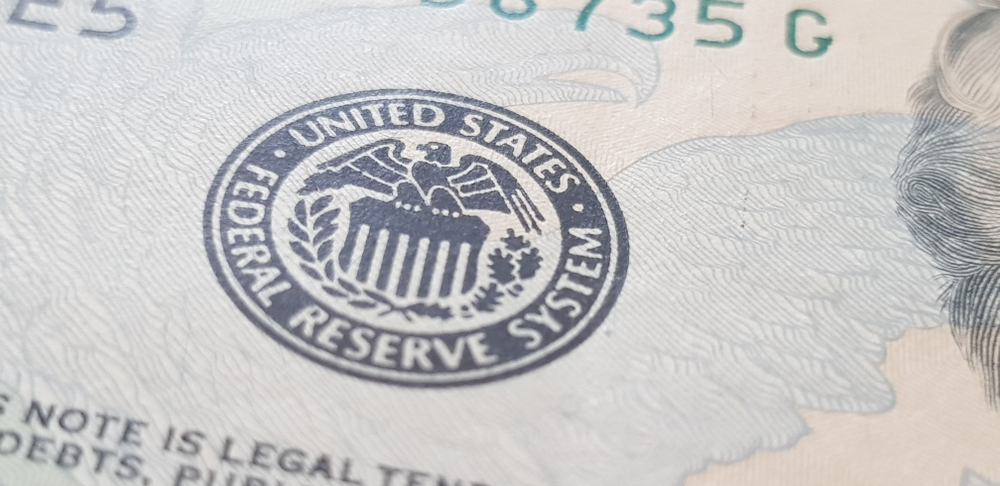Question—who makes more of an economic impact on the U.S.; the president or the Federal Reserve? A president’s assertions and intentions are definitely powerful but, if you’re really keeping your eye on the economy shell game, the place to focus is the Fed. Understanding the intricacies of what the Fed does can get confusing quickly, and the Fed has more influence, clout, and power than most people realize. Their decisions affect the entire world economy and, for good or bad, the Fed has become a monster of power.
Though The Federal Reserve System (the Fed) was brought into power by Congress in 1913, it is set up as an independent organization to avoid politicians meddling in its decisions. It is, however, subject to full oversight, funding, and adjustment of its charter by the Congress. The Chair of the Fed is appointed by the president and is subject to approval by Congress every 4 years—a built-in checks and balances system that is supposed to trickle back to voters.
The current Chairwoman of the FED is Janet Yellen and her term ends in 2018, incidentally right in the middle of President-elect Trump’s term. If we look at the current relationship between Yellen and Trump, it is unlikely Trump will re-appoint her when her time is up.
The Federal Reserve’s responsibilities fall into four general areas:
- • Conducting monetary policy by influencing money and credit conditions in the economy. The goal being full employment and stable prices.
- • Supervising and regulating banks and other important financial institutions to ensure the soundness of the banking and financial system and to protect the credit rights of consumers.
- • Stabilizing the financial system and containing systemic risk that may arise in financial markets.
- • Providing certain financial services to the U.S. government, U.S. financial institutions, and foreign official institutions, and playing a major role in operating and overseeing the nation’s payments systems.
To research more about the Fed and the economy, read our blog A Quick Look at the Fed and How It Impacts You or visit the Mises Institute and the Foundation for Economic Education.
This week the Fed announced a quarter point interest rate increase—only the second increase in the last 10 years. That tells us that the Fed is confident the economy is good place right now and also that next year is likely to be steady as well. For consumers it literally means higher interest rates and inflation.
We’ve experienced slow, steady growth in the U.S. economy for the past 7 years. And though unemployment is at a healthy 4.6%, middle class incomes are still below what they were in 2007. This has many Americans feeling like they are falling behind despite economic growth, so here are the top three things to watch for to track your financial progress with the U.S. economy in the coming months and years:
- Interest Rates
In theory, the Fed keeps interest rates low in an attempt to get people to spend money; simulating the economy. When they raise rates it shows a confidence that the economy is doing well and people will be motivated to spend regardless of the interest rate. Since the financial markets have been relatively calm since Trump’s win, the Fed recently raised rates.
Interest rates have been low for a long time, but the Fed says they are likely to implement two more increases in 2017. This is partially because of our huge deficit. The Fed has printed and handed out money from thin air, and it needs a way to recover it. Keep your eyes on the Board of Governors comings and goings on the Federal Reserve System website.
-
Consumer Confidence
You can tell how consumers feel about the economy by the way they spend. Retail sales have been healthy lately, but genuine consumer confidence would need to be sustained to have a stable effect on the economy. The reality is that when people have jobs they spend more.
Watch the current Consumer Confidence Index (issued monthly) to get a play-by-play of consumer confidence. For now the numbers indicate favorable conditions and confident consumers.
-
Employment
The reason high employment rates are the first indicator of a healthy economy is a no-brainer. When people are working they spend money, creating a positive velocity. A “normal” unemployment rate is 5%. Zero unemployment isn’t really a number to strive for, because workers are always coming and going and looking for better jobs. It’s natural to have some rate of unemployment.
To keep jobs in the U.S. you have to make it attractive to companies by creating certainty regarding taxes and trade. So watch for companies to build permanent structures on American soil. Also watch the Bureau of Labor Statistics for Current Employment Statistics (CES). The unemployment rate declined to 4.6% in November, 2016, and the next release is scheduled for January 6, 2017.
Your Strategy
Take a look at your personal wealth-building strategy. How is the success of your financial growth or retirement woven into the success of the U.S. economy? Likely much of your strategy is based on systems that are affected by the Fed and Wall Street, and that type of wealth strategy is precarious at best. Wouldn’t it be nice to participate in the economy from the safety of an alternative wealth strategy? You’d be surprised how easy it is.
At Paradigm Life, we always recommend building your wealth in a stable environment that has offered proven returns for over a hundred years. It’s called the Perpetual Wealth System, and it offers a way for you to build wealth and have access to liquid cash when you need it. We are excited to invite you to take 2 minutes to sign up for a FREE, extensive eCourse called Infinite 101®. You’ll receive access to video tutorials, articles, and podcasts. It literally costs you nothing to become educated on this ideal financial strategy and start changing your wealth paradigm!
Take advantage of this FREE resource by clicking below.








